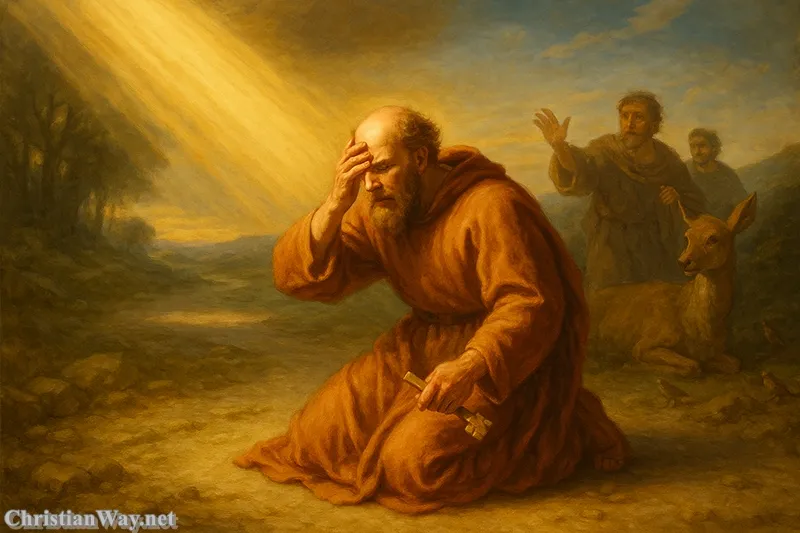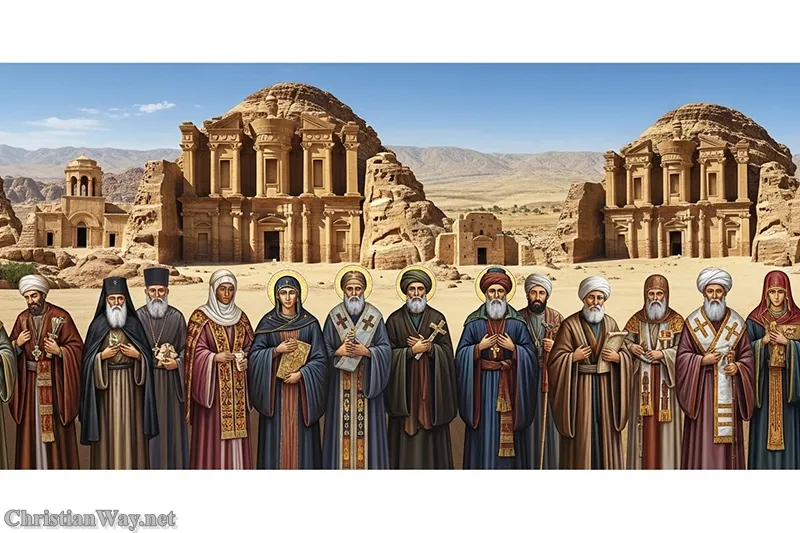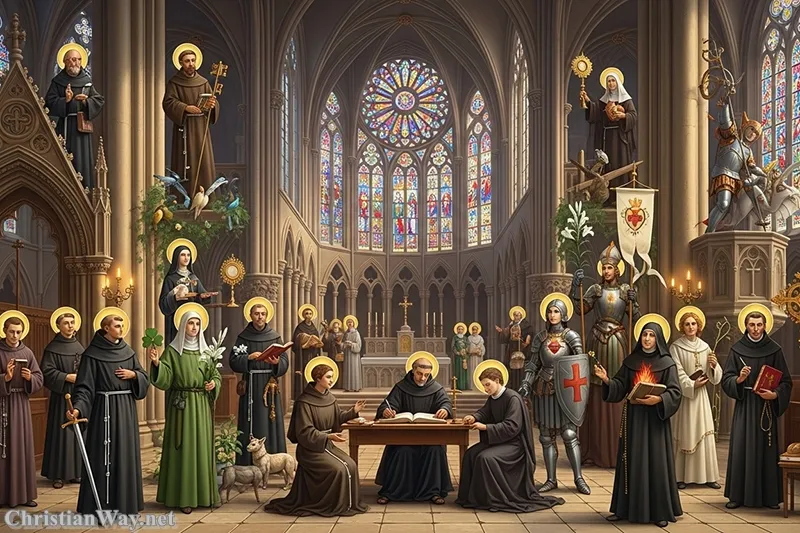Dear friends in Christ,
Every generation of believers owes a profound debt of gratitude to one extraordinary man — a man who began as a persecutor of Christians but became their greatest missionary. His life is one of the most remarkable stories of grace in all of human history. His name is Saint Paul the Apostle, known also as Saul of Tarsus.
The story of Saint Paul is not merely about a man’s change of heart; it is about the power of divine mercy. His journey — from pride to humility, from violence to peace, from blindness to sight — mirrors the very journey of the soul touched by the love of Christ.

In every page of the New Testament letters of Saint Paul, in every city he preached, and in every word of his testimony, we see a living image of the Gospel’s power to transform a human heart. He is the Apostle to the Gentiles, the great theologian of grace, and the missionary who helped spread Christianity from Jerusalem to the ends of the Roman Empire.
Let us walk with him through his conversion, his ministry, his writings, and his martyrdom — to encounter not only the man but the grace of God that made him a saint.
The Early Life of Saint Paul — From Saul of Tarsus to Zealous Pharisee
A man of intellect and passion
Saint Paul’s biography begins in the city of Tarsus, in Cilicia (modern-day Turkey), around the year A.D. 5. Born as Saul, he was a Jew by heritage, a Roman citizen by birth, and deeply educated in the Jewish Law under the great rabbi Gamaliel. His training in Scripture, philosophy, and rhetoric gave him a keen mind — one that God would later use to illuminate the faith of the entire Church.
As a Pharisee, Saul was fervent for the traditions of his ancestors and viewed the followers of Jesus as dangerous heretics. He stood among the crowd when Saint Stephen, the first Christian martyr, was stoned to death — watching with approval.
His zeal was sincere but misguided. Believing he was serving God, he began persecuting the Church, entering homes, arresting believers, and spreading fear among the disciples. Yet, even in his blindness, God was preparing him for sight.
The Conversion of Saint Paul — Encounter on the Road to Damascus
When light broke through darkness
Everything changed on the road to Damascus. As Saul traveled to arrest Christians there, a blinding light from heaven surrounded him. He fell to the ground and heard a voice saying:
“Saul, Saul, why do you persecute Me?”
“Who are You, Lord?” Saul asked.
The voice replied, “I am Jesus, whom you are persecuting.” (Acts 9:4–5)
This was the moment of divine encounter — when the persecutor of Christ became His apostle. Struck blind, Saul was led into Damascus, where the disciple Ananias, guided by the Holy Spirit, laid hands upon him and said,
“Brother Saul, the Lord Jesus has sent me that you may regain your sight and be filled with the Holy Spirit.”
Scales fell from his eyes, and his heart was made new. Saul was baptized, taking the name Paul, and from that moment, he dedicated his life entirely to proclaiming the Gospel of the risen Lord.
From Saul to Paul — A New Mission for a New Man
The conversion of Saint Paul was not just a change in belief — it was a rebirth. He went from being a man of law to a man of grace, from a defender of the old covenant to the apostle of the new.
The persecutor became the missionary, the destroyer of churches became their builder, and the enemy of Christ became His most faithful servant.
Paul’s transformation shows us that no one is beyond redemption. As he would later write in his own words:
“If anyone is in Christ, he is a new creation; the old has passed away, behold, the new has come.” (2 Corinthians 5:17)
The Missionary Journeys of Saint Paul
Carrying the Gospel to the world
After his conversion, Paul spent years in prayer and preparation before beginning his public ministry. From Antioch, he launched several missionary journeys that would carry the Gospel far beyond the boundaries of Israel.
1. The First Journey:
With Barnabas, Paul preached in Cyprus, Pisidian Antioch, and Iconium, converting many Gentiles. It was here that he first faced persecution but also saw the Church grow in joy and faith.
2. The Second Journey:
Traveling through Asia Minor and into Macedonia and Greece, he founded Christian communities in Philippi, Thessalonica, Corinth, and Athens — places that would later receive his letters of Saint Paul, now part of the New Testament.
3. The Third Journey:
Paul returned to strengthen the Churches he had founded, especially in Ephesus, where he preached for three years. He faced hostility, imprisonment, and hardship, yet his faith never wavered.
Through shipwrecks, hunger, and rejection, Paul’s courage inspired countless believers. He carried no weapon but the Word of God, no wealth but the grace of Christ, and no ambition but to bring souls to salvation.
The Theology and Letters of Saint Paul
The heart of the New Testament
The Pauline Epistles — his letters to the early Christian communities — form nearly half of the New Testament. These writings are not abstract theology but living instruction from a pastor who loved his flock deeply.
In Romans, Paul explains the mystery of salvation by faith and grace.
In Corinthians, he teaches about love, the Eucharist, and the Body of Christ.
In Galatians, he defends the freedom of the Gospel.
In Philippians, he rejoices even in imprisonment.
In Timothy and Titus, he instructs bishops and priests in shepherding the Church.
Every word breathes with life, faith, and urgency. For Paul, Christianity was not a philosophy but a personal encounter with Christ. He declared:
“It is no longer I who live, but Christ who lives in me.” (Galatians 2:20)
His theology of grace, faith, and justification remains the cornerstone of Christian thought, bridging the Apostolic era and the living Church of today.
Saint Paul the Apostle — Apostle to the Gentiles
A universal mission of salvation
Jesus had sent the Apostles to “make disciples of all nations,” and Paul took this commission literally. He became known as the Apostle to the Gentiles, bringing the message of salvation to Jews and non-Jews alike.
His vision of the Church was profoundly universal: one faith, one baptism, one Lord — beyond ethnicity, culture, or status. He wrote:
“There is neither Jew nor Greek, slave nor free, male nor female, for you are all one in Christ Jesus.” (Galatians 3:28)
Through Paul’s tireless evangelization, Christianity spread from Jerusalem to the heart of the Roman Empire — a spiritual revolution that transformed civilization itself.
Trials, Imprisonment, and Martyrdom of Saint Paul
Faith stronger than chains
Paul’s preaching stirred both hearts and hostility. He was beaten, stoned, shipwrecked, and imprisoned numerous times. Yet, even in chains, he continued to preach. From his prison cell, he wrote some of his most moving letters — overflowing with faith, joy, and perseverance.
At last, under Emperor Nero, Paul was brought to Rome as a prisoner. There he continued to teach, encouraging the believers and strengthening the Church.
Tradition holds that Saint Paul was martyred around A.D. 67, beheaded with a sword on the Ostian Way. Because he was a Roman citizen, he was spared crucifixion — yet his death, like his life, was an offering of love.
The site of his martyrdom became the foundation for the Basilica of St Paul Outside the Walls in Rome, one of the most revered Catholic pilgrimage sites in the world today.
Faith and Grace — The Heart of Saint Paul’s Message
If one word captures the theology of Saint Paul, it is grace. He never forgot that he had once been a sinner saved by mercy. Everything he taught flows from that single truth:
“By the grace of God I am what I am.” (1 Corinthians 15:10)
Paul’s gospel is a message of redemption through Christ, not by human effort but by divine love. His writings teach that faith is not earned but received; salvation is not a reward but a gift.
This message has shaped the heart of Christian spirituality for two millennia. It calls us to humility, gratitude, and surrender — to trust that God’s grace is enough, even in our weakness.
The Companions and Legacy of Saint Paul
Saint Paul did not labor alone. The Acts of the Apostles tell of his collaboration with Barnabas, Silas, Timothy, Luke, Aquila, and Priscilla — brothers and sisters who shared his mission with faith and courage.
Their friendship shows that the Church’s mission is communal — born from fellowship, prayer, and shared suffering.
Paul’s writings and example inspired countless saints after him — from Augustine to Francis of Assisi, from Teresa of Ávila to John Paul II. His letters are read at nearly every Mass, uniting the ancient Church to the living Church today.
The Feast and Veneration of Saint Paul
The Church celebrates Saint Paul’s feast day jointly with Saint Peter on June 29, honoring them as the twin pillars of faith — Peter the Rock, Paul the Voice.
Together, they represent the unity and universality of the Church: Peter, who shepherded the flock; and Paul, who carried the Gospel to the world.
In art, Saint Paul is often depicted holding a sword and a book — symbols of his martyrdom and his teaching. The sword reminds us of his death; the book, of his immortal words that still shape the faith of billions.
Lessons from the Life of Saint Paul
1. No one is beyond redemption
Paul’s conversion reminds us that even the greatest sinner can become a saint through the grace of God.
2. Faith is an encounter, not an idea
Paul met Christ personally. True faith begins not with knowledge but with relationship.
3. Grace is stronger than guilt
His life teaches us that God’s mercy transforms failure into mission.
4. The Gospel is for everyone
Paul’s missionary heart broke down barriers of race, culture, and class. In Christ, all are one.
5. Suffering can glorify God
Paul’s chains became his pulpit. His trials preached more powerfully than his words.
Saint Paul’s Message for Our Time
In a world searching for identity, purpose, and forgiveness, Saint Paul’s life speaks directly to the human heart. His story tells us that transformation is possible, that grace is real, and that love is stronger than sin.
He challenges us to stop defining ourselves by our past and to live as new creations in Christ. He calls us to be missionaries — not necessarily by traveling continents, but by carrying the light of Christ into our workplaces, families, and friendships.
To read his letters today is to hear the heartbeat of the Gospel itself: the voice of a man utterly in love with Christ, who wrote,
“For me, to live is Christ, and to die is gain.” (Philippians 1:21)
🕯️ Reflect and Pray
Lord Jesus Christ,
You transformed Saul the persecutor into Paul the Apostle.
Through his preaching and example, the world came to know Your saving love.
Grant that we, too, may be renewed by Your grace,
that our lives may bear witness to Your mercy.
Give us the courage to proclaim Your name with joy,
and to trust, as Paul did, that Your power is made perfect in weakness.
Amen.
May the fire of Saint Paul’s zeal burn within your heart,
and may his intercession strengthen your faith and awaken your mission for Christ.
— Fr. John Matthew, for Christian Way











